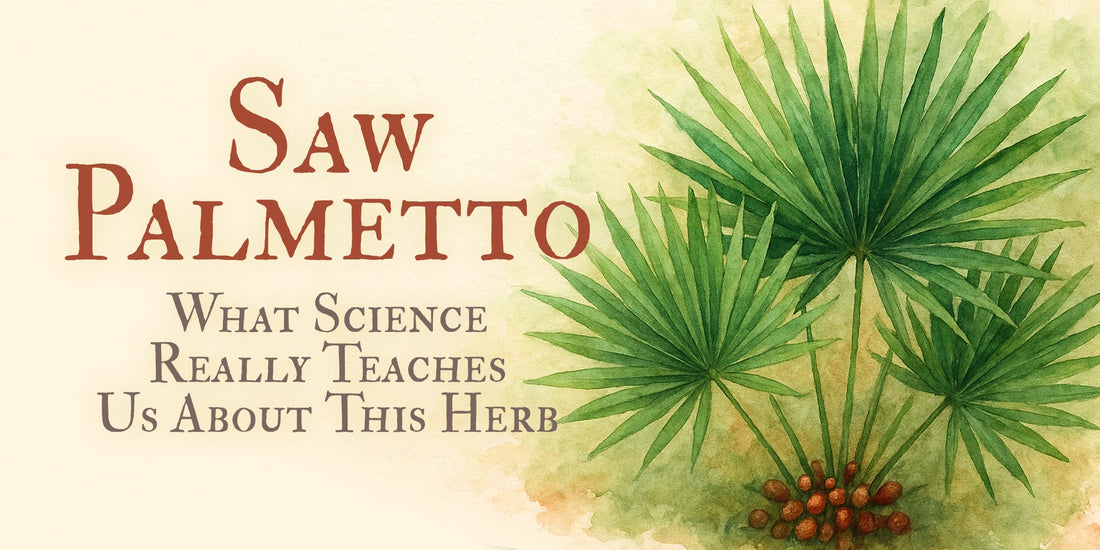
Saw Palmetto: What Science Really Teaches Us About This Herb
Share
Saw Palmetto: What Science Really Teaches Us About This Herb
Tradition and Science in Balance
Saw Palmetto (Serenoa repens) has been trusted for centuries. Native Americans used it to strengthen men’s vitality, and later it became a staple in European herbal medicine. In fact, Germany, France, and Italy officially approve standardized saw palmetto extracts for men struggling with prostate enlargement, known as benign prostatic hyperplasia (BPH).
Earlier studies in the 1980s through the early 2000s even suggested saw palmetto worked as well as prescription drugs like finasteride or tamsulosin, but with far fewer side effects. That gave the herb a reputation as a natural alternative to pharmaceuticals.
The Debate: Alone vs. Together
Not every study came back glowing. A large U.S. trial in 2013 using high doses of saw palmetto found little difference compared to placebo for urinary symptoms. A 2021 review of 27 studies echoed that concern, noting that saw palmetto on its own may not always deliver consistent results.
But here’s where the story gets interesting: when you combine saw palmetto with other supportive nutrients and herbs, the benefits grow. This is the synergistic effect—nature’s way of multiplying impact.
-
2014 clinical trial (225 men): Saw palmetto mixed with lycopene, selenium, and tamsulosin relieved urinary problems more effectively than any one treatment alone.
-
2018 SPRITE study (404 men): Saw palmetto combined with selenium and lycopene worked just as well as tadalafil (a pharmaceutical standard) for easing urinary discomfort.
-
Other studies have shown enriched forms of saw palmetto oil improved symptoms more than regular extracts, and long-term use may help slow the progression of prostate issues.
The Inflammation Connection
Modern research also points to saw palmetto’s anti-inflammatory power. Animal studies (2015–2019) showed it reduced swelling and oxidative stress in the prostate. While human studies are fewer, this suggests saw palmetto may calm inflammation that drives many urinary and prostate problems.
Protecting Testosterone and DHT Balance
Saw palmetto doesn’t just soothe—it protects. It naturally blocks an enzyme called 5-alpha-reductase, which normally converts testosterone into dihydrotestosterone (DHT). Too much DHT contributes to prostate growth and even hair loss. By reducing this conversion:
-
Testosterone levels are preserved.
-
The prostate is less likely to enlarge.
-
Men may see secondary benefits like improved vitality, libido, and possibly hair health.
One review in 2020 found saw palmetto reduced DHT binding by about 50%. Another small study combining saw palmetto with astaxanthin showed a 38% increase in serum testosterone—a major boost for men aiming to maintain hormone health naturally.
Where Tradition Meets Modern Wellness
So, is saw palmetto effective? The real answer is yes, especially when part of a bigger picture. Alone, results can vary. But in combination with allies like nettle, ginseng, selenium, or lycopene, the herb consistently shines.
Centuries of traditional use, supported by emerging science, suggest saw palmetto is far more than a “prostate herb.” It’s a hormone balancer, anti-inflammatory agent, and vitality booster. Add in lifestyle essentials like diet, exercise, and sleep, and men have a powerful toolkit for lifelong health.
